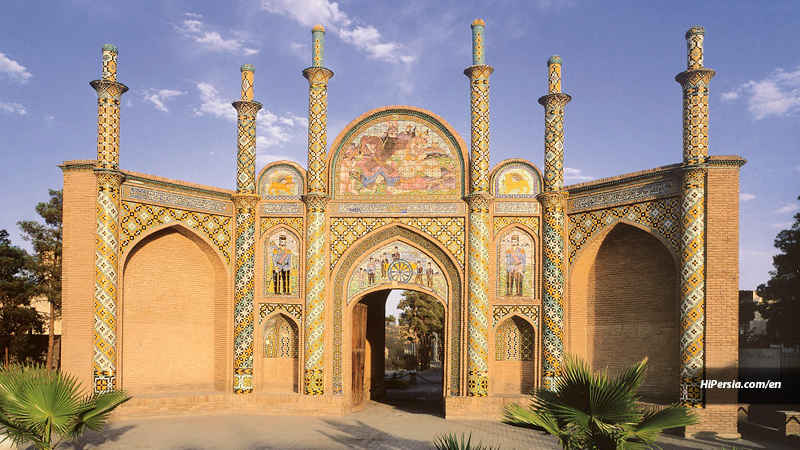Semnan
The capital of the province of the same name, Semnan, is located at the foot of the Alborz Mountains. The textile and carpet production are the most important industries in the city. Semnan was a stopping point on the Silk Road.
The city offers various cultural and recreational activities, historical and religious sites, festivals, gardens and parks, colleges and universities. The city is the cultural and political capital of the province of Semnan.
However, there are other interesting places in Iran, perhaps less known outside the country, but offering pleasant surprises to those interested in history, architecture and popular traditions. One of them is the city of Semnan, among other treasures of Iran.
Ancient monuments of Semnan
Semnan Door
This building is the north gate of the city and dates back to the Qajar era. According to the inscription on the door, the construction of the building was completed in 1885, during the reign of Naser al-Din Shah, the Qajar king. The Semnan Gate or City Gate was finely decorated with colored tiles depicting both Persian mythology and the rulers of the Qajar period. During Reza Shah Pahlavi’s reign, when architects were constructing new roads and buildings in Iran, the old gate complex underwent modifications but was not demolished, and today it has become a transit point for cars. Despite this, the Semnan Gate retains its charm and the colorful tiles add a distinctive touch to those who want to admire the Iranian art of decoration. Right outside the door is a local craft shop.
Semnan Bazaar
The largest shopping center in Semnán dating back to the Qajar era and is located on Shohada Street. The length of the bazaar is about 1600 meters and its construction dates back about 180 years, to the beginning of the Qajar dynasty. The architecture of this monument is in the ancient Persian style, decorated with sun-dried bricks and brick roofs according to the specific climatic conditions of the desert region.
Semnan Jomeh Mosque
One of the oldest buildings in the city that has been modified over time. Some parts of the Seljuk and Timurid periods have been preserved. It seems that the construction of the mosque, built on the ruins of a fire temple, dates back to the 7th century. The mosque has acquired great value and credibility in religious, cultural and social terms throughout history.
Mosque of the Imam of Semnan
Dating from the Qajar era, founded during the reign of Fath Ali Shah, the Imam Mosque is known as the Shah Mosque, completed in 1865. A visit to this mosque offers many opportunities to learn about the usual decoration of the Qajar period.
Hazrat Bath
Also known as Pahneh, it dates back to the Safavid period and was subsequently used and maintained during the Qajar dynasty. The bath is located between the Jomeh Mosque and the Imamzadeh Yahya, in a very special area of the Semnan bazaar, a kind of small square or saray covered with wooden beams, side courtyards and connecting streets. The construction of the Hazrat bath dates back to the 15th century AD. In 1894, during the reign of Mozafar al-Din Shah Qajar, the architects repaired and renovated the bathroom. Today, the bathroom, in addition to demonstrating its original function, serves as a museum and offers a rich display of objects.
Chehel Dokhtar Tower
The construction of this tower (an ancient fire temple) dates back to pre-Islamic times. According to the beliefs of the locals, the Chehel Dokhtar tower is a monument that helps a girl find a husband. In fact, the girls enter the tower and throw three to seven stones from the inside to the outside. If they throw all the stones exactly outside the tower, they will be married in the same year. If not, they have to stay home without a husband and wait another year.
Parvar protected area
The refuge of various species of wild animals in Iran.
If you are passionate about mountains, the Silk Road, mountaineering, skiing, anthropology, historical landscapes and the fascinating culture of the Middle East, SITO Travel will help you organize your trip to Iran. Contact us because our experience is born and developed in the field.



Comments